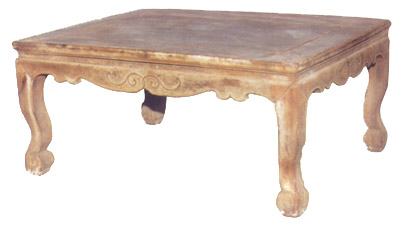A Traditional Aesthetic
Wooden furniture, antique furniture, was made in China from the earliest times. Furniture, excavated from ancient Chu sites dating back to c.250BCE, shows that wooden furniture and lacquer decoration have been in continuous use in China for many hundreds of years.
It was not until the rise of International trade, great cities, and a wealthy elite that cabinet makers made the great aesthetic advances that would characterize their art.
The golden age of furniture production and handmade furniture in China began during the Ming dynasty (1368 - 1644), when the ideal was simple furniture with clean lines and sparse decoration that was limited to latticework and open or relief carving.
During the early years of the Qing dynasty (1644 - 1912), this ideal remained entrenched. As China grew wealthy in her stability the decorative arts began to reflect a new attitude of confidence and prosperity.
Pieces of furniture, and fitted furniture, became larger and heavier, whilst always retaining a fundamental, simple purity. The rich carving so celebrated in the Ming period never fell from fashion, but was transformed into something far more expressive and used ever more liberally. Chair backs or legs were often carved from top to bottom with detailed, naturalistic designs. Linear styles gave way to a more fluid approach that incorporated graceful curves and shapes.
Domestic furniture remained utilitarian and unassuming - beaded or bevelled edges and simple inlays of light metal provided an aesthetic respite from the plain, flat surfaces. Pieces made for court use were more sumptuous - mother of pearl, porcelain, enamel and even precious stones were often used as decoration on the most important palace furniture.
Popular Woods
Expendable furniture was made from cheap bamboo, but Chinese cabinet makers prized indigenous hardwoods such as as Rosewood above all others. These were generally sourced from the warmer areas of southern China, although imports from Indonesia and other south east Asian nations supplemented home grown stocks.
Burr woods were also popular but were usually used sparingly, due to cost and scarcity. The most coveted timber of all was Zitan, an extremely dense and attractive variety of sandalwood that was literally worth its weight in gold.

No comments:
Post a Comment